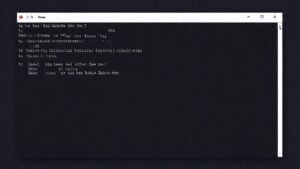Black Parents and Policing: The Talk Reimagined for a Turbulent Era
- THE MAG POST

- Aug 31
- 6 min read

The Talk Reignited: When Federal Force Met Neighborhood Fear
Across the capital and many neighborhoods, the surge of federal enforcement has become a new backdrop for the long-running family conversation about safety and dignity that many households call the talk. Against the scale of recent events, Black parents and policing concerns intersect in real time, prompting parents to recalibrate curfews, boundaries, and the language they use with their children. This moment tests not only how families stay safe, but how they preserve trust and agency in public spaces.
Historical roots of the talk about policing
Long before today’s headlines, Black families built a repertoire of practical guidance—clear scripts, calm tone, and a focus on de‑escalation—that could steer a tense encounter toward safety. The talk is as much about identity and dignity as it is about compliance: it teaches youths to read cues, identify exits, and communicate intent with minimal ambiguity. It is a living pedagogy that evolves with each generation, but its aim remains constant: reduce harm while preserving autonomy in the presence of authority.
In communities shaped by surveillance and bias, the talk also carries a historical memory of lost trust and broken promises. The deaths of Trayvon Martin and Michael Brown, followed by the nationwide wake of George Floyd, sharpened that memory into a collective script for how to move through public spaces without inviting harm. The current surge of federal agents in Washington reintroduces those fears, even as some families hope for clearer rules and accountability. Black parents and policing concerns thus converge with a demand for safe, humane treatment and reliable pathways to recourse when things go wrong.
Public display of enforcement and its impact on families
When gear, helmets, and cameras line a city street, the ambience shifts from ordinary to charged. Youth perceive the visibility of power as a direct signal of scrutiny, and parents interpret every coincidence as a potential test. Curfews tighten, playdates shrink, and routines become procedural checks rather than spontaneous adventures. The talk broadens to include scenes, signals, and timing—how to navigate crowds, where to stand, and how to articulate intent in public spaces—so safety does not become repression.
But the impact extends beyond the individual household. Neighborhood conversations widen into community debates, schools weigh how to discuss safety with students, and local leaders confront questions about accountability and the boundaries of federal action. In this moment, the talk crosses from private counsel to public discourse, inviting parents, educators, and policymakers to collaborate on guardrails that protect both liberty and safety.
Racial Profiling Anxiety and Policy Feedback
History shows that policy and perception feed one another, often amplifying fear even as reforms attempt to restore trust. The presence of federal enforcement in major urban centers reshapes how families model everyday movements, from routes home to the timing of after-school activities. The dynamics are intricate: policy signals, media framing, and community experience interact to form a shared sense of risk that can either erode or reinforce social bonds.
For Black parents and policing concerns, the current moment demands not only caution but critical engagement. Curfews and safety checks are discussed as adaptive practices that reduce exposure to harm while preserving freedom of movement. The aim is practical resilience—how to stay visible and safe without surrendering civic participation or personal dignity—so youth can participate in public life with confidence rather than fear.
From high-profile cases to policy shifts
High-profile cases have etched a durable memory of fatal outcomes and the enduring need for accountability. The national response—protests, reforms, and renewed dialogue—has sometimes tempered fear, only to be jolted anew by policy decisions that convey a different stance on public safety. The DC events illustrate a broader dynamic: leadership choices and media narratives can reframe everyday life, prompting families to recalibrate expectations about what safety looks like in different contexts.
In practice, these shifts translate into tangible routines. Curfews become more explicit, routes and meeting places are reconsidered, and youths learn to articulate reasons for their presence in public spaces with greater clarity. The talk thus evolves from a reaction to a proactive playbook for negotiating risk while preserving movement and opportunity.
Home conversations tighten: setting curfews and boundaries
Parents recount moments when a single gesture or interpretation could escalate a confrontation, prompting sharper agreements about how to respond to law enforcement. The aim is to reduce ambiguity, not to inflame tension. Atrayu Lee, for example, navigates with a blend of community engagement and personal restraint—staying involved with local organizations and choosing attire that minimizes misinterpretation. Such choices illustrate a broader shift: parenting becomes a form of civic preparation, equipping youths to participate safely in a charged public sphere.
The talk thus expands beyond mere rules. It becomes a framework for building trust between youth and institutions, clarifying when to comply, when to communicate, and how to seek redress if necessary. These conversations matter because they shape how the next generation experiences rights, responsibilities, and belonging in a crowded, dynamic city.
Practical Pathways: Safer Interactions and Community Supports
When the landscape remains unsettled, practical guidance and community resources become essential. The goal is to empower youth with skills and parents with supports that preserve dignity while reducing risk in real time. Core recommendations center on plain language, transparent intent, and calm demeanor during any encounter, paired with a commitment to de‑escalation and rights education so young people can advocate for themselves without escalating tension.
Community networks—mentoring programs, youth clubs, and family‑resource centers—play a crucial role. They provide safe spaces to rehearse responses, access trusted adults, and learn from peers who have navigated similar pressures. Schools, faith communities, and local organizers can convene dialogues that bridge gaps between families and police, reinforcing accountability and shared safety while honoring individual agency.
Guidelines that preserve dignity while ensuring safety
Experts emphasize clear, respectful communication, minimal gesturing, and timely disclosure of intent. Training in de‑escalation and rights awareness can empower youths to engage constructively with authorities, while parents learn to balance caution with courage. The objective is a long-term culture in which safety and dignity reinforce one another rather than compete for dominance.
In parallel, transparent data, independent audits, and community oversight help restore confidence that safety measures serve the public good. When people see measurable accountability, the fear that once stoked mistrust begins to ease, and everyday city life can resume a steadier rhythm.
Community resources and mentoring networks
Local coalitions, after‑school programs, and mentorship networks offer practical support for families navigating this terrain. These structures provide safe spaces to practice conversations, access counsel, and connect with trusted adults who understand both the legal landscape and the realities of street life. By strengthening ties between families and institutions, communities can transform precaution into proactive safety and uphold the idea that youth belong fully in public life.
Schools, religious organizations, and civic groups can host inclusive forums that address policing, rights, and responsibilities, ensuring that reassurance is grounded in knowledge. When communities collaborate, the talk shifts from fear to informed action, enabling young people to move through the world with confidence and agency.
Key Takeaways
What families should remember
The talk remains a living, evolving framework that centers dignity, safety, and respect. It is not a relic but a practical toolkit for navigating a complex public sphere with clarity and composure.
Empowerment grows from honest dialogue, access to trusted mentors, and strong community networks that reinforce safe behaviors without surrendering rights or opportunities.
Policy and society: moving beyond fear
Real progress requires transparent policing, accountable institutions, and media literacy that counters fear with verified information. Families thrive when guardians model calm reasoning, critical assessment, and constructive engagement with public life.
Ultimately, the next generation deserves to move through the world with confidence, safety, and ongoing pathways to participate as full, valued members of society.
Aspect | Summary |
Background | Examines how Black parents and policing concerns reshape the traditional talk about safety and police encounters. |
Key events | Federal enforcement surge in DC and visible policing influence daily routines and conversations at home. |
Impact on families | Curfews tighten, activities shrink, and guidance emphasizes dignity alongside caution. |
Historical context | References Trayvon Martin, Michael Brown, George Floyd to illustrate evolving conversations and policy response. |
Practical guidance | Plain language, de‑escalation training, and community resources to support safer interactions. |






















































Comments